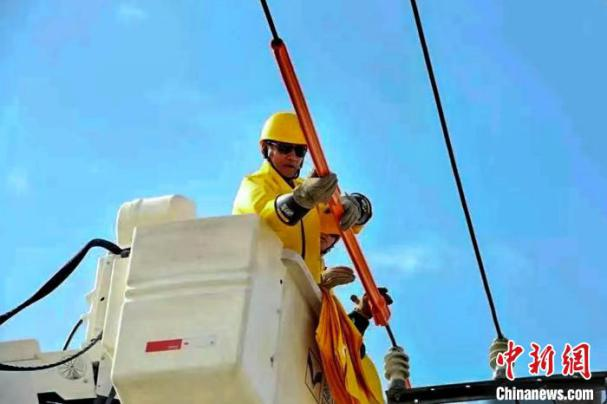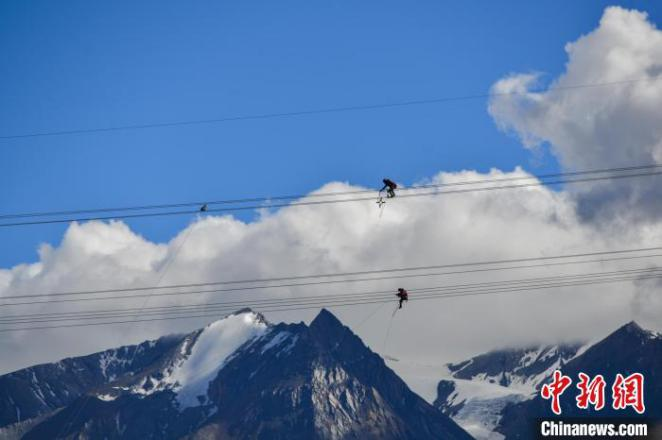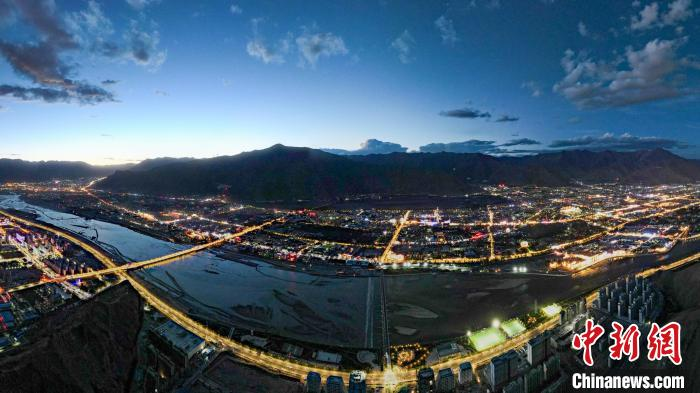NPC deputy witnesses fast development of Tibet's power sector
Updated: 2023-03-03 (chinadaily.com.cn)  Print
Print 



Tashi Nyima, an employee from State Grid's Lhasa Electric Power Company and a deputy to the 14th National People's Congress from Southwest China's Tibet autonomous region [Chinanews/Jiang Feibo]
Tashi Nyima, a deputy group head of the Urban Power Supply Services Center in State Grid's Lhasa Electric Power Company, has become a witness to the leapfrog development of the power sector in Southwest China's Tibet autonomous region.
Tashi Nyima, also a deputy to the 14th National People's Congress (NPC), comes from Riwoqe county in Tibet's Qamdo prefecture.
During an interview with China News Network, Tashi Nyima said that he used oil lamps in his childhood. Although there were electric lights at home when he was an elementary and middle school student, there were also frequent power outages.
Tashi Nyima came to Lhasa to study at a hydroelectric technical school in 1990. At that time, the city mainly relied on the Najin Hydroelectric Power Station for electricity. During the peak season in winter, different urban units, including schools, took turns receiving power.

Tashi Nyima repairs an electricity failure. [Provided by the interviewee to Chinanews]
Three years later Tashi Nyima graduated from the hydroelectric technical school and became a maintenance and repair worker in Najin Hydroelectric Power Station. In the early days, his work mainly involved monitoring the operation of the station's four hydroelectric turbine units.
Back then, only two units could operate in winter when water flow in the Lhasa River was low.
Not until the end of the 1990s had Lhasa basically solved its power shortages.
Tashi Nyima joined an urban distribution repair team in 2005 to deal with power failures in residential communities.
From that time the development of Tibet's electric power sector entered a fast lane.

A photo taken on June 23, 2020 shows two employees from Lhasa Electric Power Company working at height. [Chinanews/Jiang Feibo]
For instance, the Qinghai-Tibet Grid Interconnection Project, with a total investment of 16.28 billion yuan ($2.36 billion), came into use at the end of 2011. The power grid of Tibet's Qamdo became connected with that of neighboring Sichuan province in November 2014, and the Central Tibet Power Grid Interconnection Project, which broke multiple records in the construction and operation of power grid projects nationwide, was completed and put into operation on November 23, 2018.
The Ali-Tibet Central Power Grid Interconnection Project formally started operation in December 2020, marking Tibet's entry into the era of a unified power grid across all seven cities and 74 counties (districts) in the autonomous region.
Tashi Nyima said that the electric wires in old urban areas of Lhasa were like spider webs intertwined with various pipelines in the past, resulting in high failure rates and repair difficulties.
Therefore, Tashi Nyima and his colleagues often had to climb up electric poles while other workers would look for corresponding faulty lines nearby and pull them so as to find the specific faulty line, reconnect it and restore power.
Thanks to the renovation of old urban areas, all pipelines have been put underground and the scenes of spider web-like electric wires have gone forever.
Right now, Tashi Nyima and Lhasa Electric Power Company attach great importance to further improving their power supply services.
In 2016, Tashi Nyima and three other workers from Lhasa Electric Power Company were sent to other provinces to learn their advanced skills related to live-line work and emergency repairs. A year later, the company formally established a live-line operation and maintenance team in 2017.
Nowadays, they can fix some faults during the live-line work without any power outages so that local residents don't even realize they were at work.

An evening scene of Tibet [Chinanews/Jiang Feibo]
Statistics show that the autonomous region invested nearly 70 billion yuan ($10.2 billion) in its electricity supply sector from 2012 to 2022, exceeding its total investment in the industry over the previous six decades.
Meanwhile, Tibet's electricity consumption has maintained a double-digit growth rate over the past few years, increasing from 2.77 billion kilowatt-hours in 2012 to 11.86 billion kilowatt-hours in 2022.
In addition, the autonomous region has gradually sent its surplus power to other provincial regions on the basis that its own demand has been fully met.








